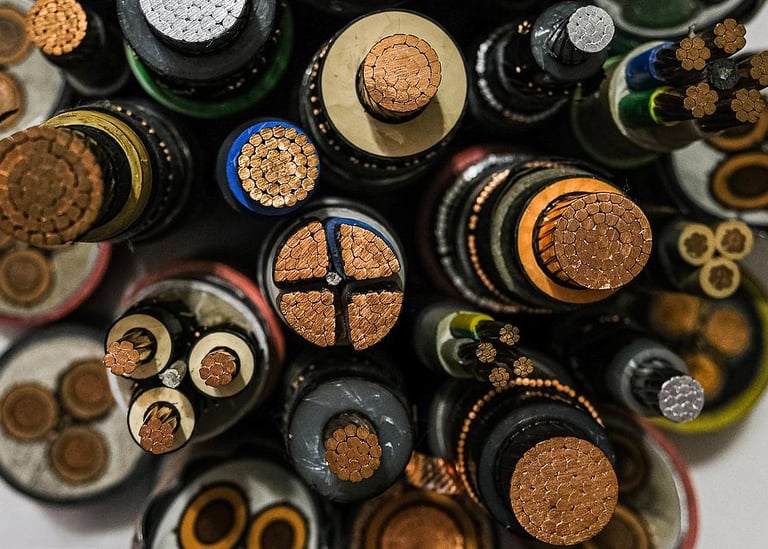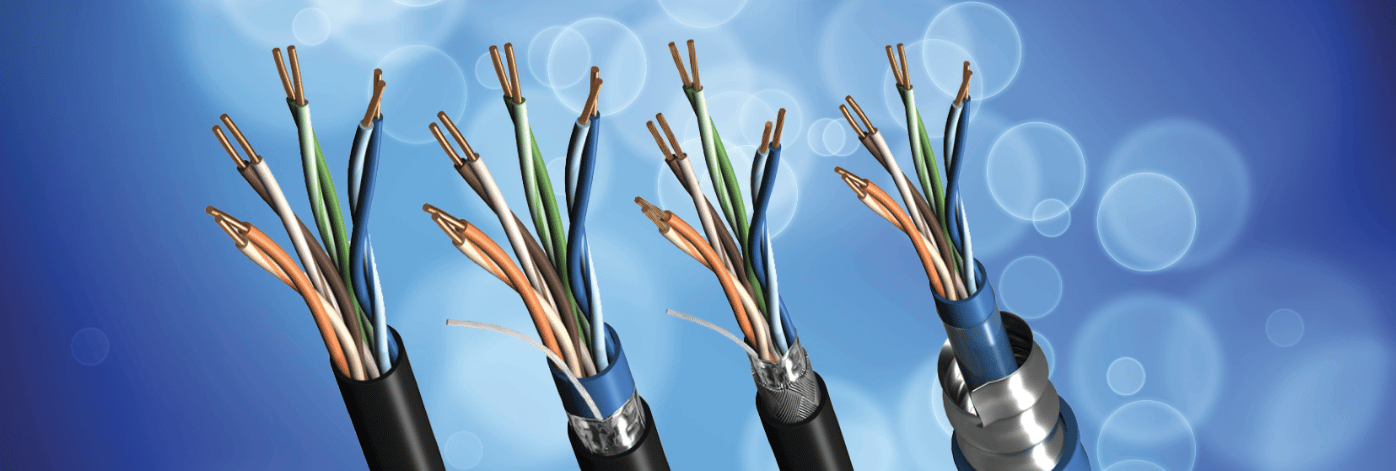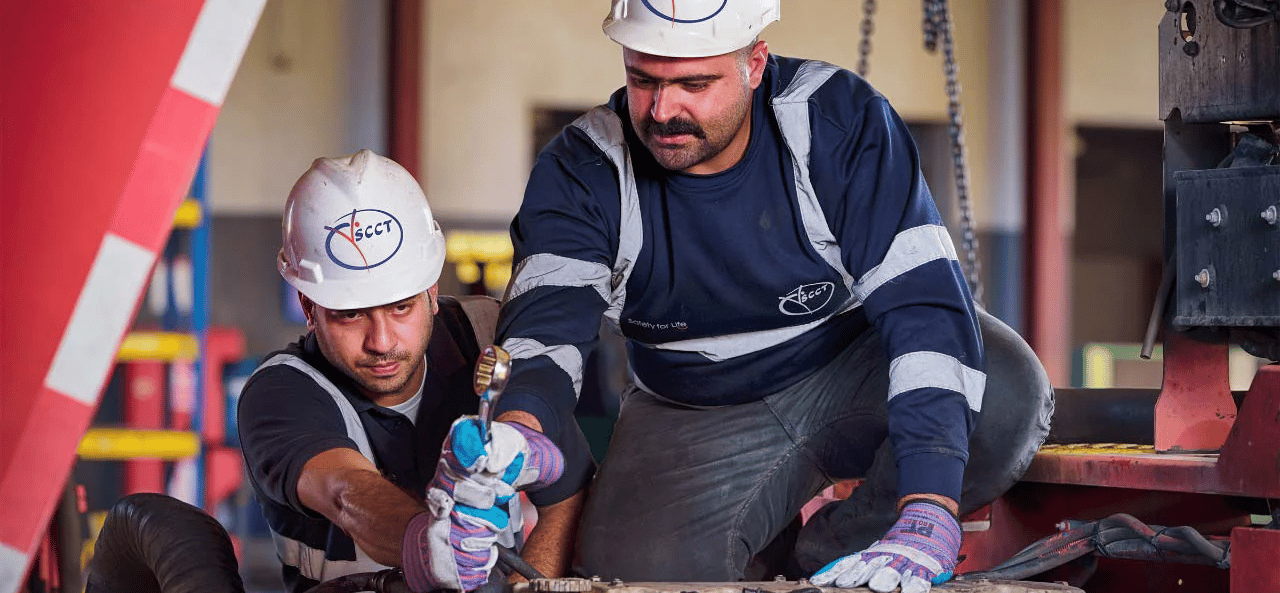📞+86 153 7530 2641 📧 hongjing.Wang@feichuncables.com

What Are the Different Conductor Types Used in Electrical Cables?
Discover the most common conductor types used in electrical cables, including bare copper, tinned copper, and silver-plated copper. Learn how these materials impact performance, corrosion resistance, and suitability for industrial, marine, and high-temperature cable applications.
hongjing.Wang@Feichun
7/25/20256 min read
When designing electrical systems, selecting the appropriate conductor types in electrical cables is a critical decision that directly impacts performance, safety, and longevity. The conductor serves as the backbone of any electrical cable, determining how efficiently power flows, how well the cable withstands environmental stresses, and how long it will operate reliably in its intended application.
Conductor materials significantly influence both electrical and mechanical performance characteristics. From basic residential wiring to complex industrial automation systems, the choice between bare copper, tinned copper, silver-plated copper, or other specialised conductor materials can mean the difference between a cable that performs flawlessly for decades and one that fails prematurely under operational stress.
Feichun a leading supplier of custom and stock wires and cables, understands that proper conductor selection requires matching material properties to specific application demands. Whether you're dealing with the harsh conditions of a mining operation, the corrosive environment of marine applications, or the precision requirements of aerospace systems, the right conductor type is fundamental to cable success.


What Is a Conductor in a Cable?
A conductor in an electrical cable is the core component responsible for carrying electric current from one point to another. Typically made from highly conductive metals such as copper, aluminium, or their alloys, conductors form the essential pathway through which electrical energy flows within the cable structure.
The primary function of conductors extends beyond simple current transmission. They must efficiently dissipate heat generated during operation, maintain voltage integrity across the circuit, and provide mechanical stability to the overall cable assembly. In multi-conductor cables, each individual conductor must perform consistently while working alongside others in the same cable jacket.
Conductors also play a crucial role in determining the cable's overall electrical characteristics, including resistance, capacitance, and impedance. These properties directly affect power loss, signal quality, and the cable's ability to handle specific voltage and current ratings safely.


Key Factors That Influence Conductor Selection
Selecting the best conductor materials for power cables requires careful consideration of multiple operational and environmental factors. Understanding these variables ensures optimal performance and prevents costly failures in electrical installations.
Operating Temperature Range Temperature is one of the most critical factors in conductor selection for power cables. Different conductor materials and coatings perform optimally within specific temperature ranges. Bare copper works well in standard temperature conditions, whilst nickel-plated copper excels in high-temperature applications such as industrial furnaces or automotive engine compartments.
Voltage Rating and Insulation Requirements Higher voltage applications demand conductors with specific characteristics to prevent electrical breakdown and ensure safe operation. The conductor material must work harmoniously with the insulation system to maintain electrical integrity throughout the cable's operational life.
DC Resistance and Energy Efficiency Lower resistance conductors reduce power losses and improve energy efficiency, making them ideal for power transmission applications. Silver-plated copper offers exceptional conductivity but comes at a premium cost, whilst bare copper provides excellent performance for most standard applications.
Mechanical Properties Tensile strength, flexibility, and resistance to vibration are essential considerations, particularly for cables subject to mechanical stress. Mining cables, for instance, require high-strength cable conductors that can withstand constant movement and mechanical abuse without compromising electrical performance.
Environmental Exposure Moisture, chemical exposure, UV radiation, and atmospheric conditions significantly influence conductor choice. Marine environments demand corrosion-resistant cable conductors, whilst outdoor applications may require UV-resistant coatings to prevent degradation.
Types of Conductors Commonly Used in Electrical Cables
Understanding the various electrical cable conductor types available helps engineers and technicians make informed decisions based on specific application requirements.
Bare Copper Bare copper remains the gold standard for electrical conductivity and serves as the benchmark against which other conductor materials are measured. Its excellent electrical properties, combined with good mechanical flexibility, make it suitable for general-purpose wiring, power distribution systems, and grounding applications. In Australian residential and commercial installations, bare copper conductors are commonly found in building wiring, switchboard connections, and earthing systems.
Tinned Copper Tinned copper conductors feature a thin tin coating that significantly enhances corrosion resistance whilst maintaining excellent electrical properties. This coating makes tinned copper particularly valuable in humid environments, coastal installations, and marine applications where saltwater exposure could otherwise cause rapid corrosion of bare copper. Australian marine facilities and offshore platforms frequently specify tinned copper for its superior environmental resistance.
Silver-Plated Copper Silver-plated copper conductors offer the highest electrical conductivity available in practical conductor materials. The silver plating provides exceptional performance at elevated temperatures and high frequencies, making these conductors essential for aerospace applications, military equipment, and high-performance electronic systems. Despite the higher cost, silver-plated copper delivers unmatched performance in critical applications where electrical efficiency is paramount.
Nickel-Plated Copper Nickel plating provides outstanding corrosion resistance and exceptional high-temperature performance, making these high-temp cable conductors ideal for industrial heating systems, furnace wiring, and harsh chemical environments. The nickel coating maintains its protective properties at temperatures that would compromise other coating materials, ensuring reliable operation in extreme conditions.
High-Strength Alloys High-strength alloy conductors are engineered for applications requiring enhanced mechanical durability without significant compromise to electrical performance. These durable cable conductors for industrial use are commonly specified for overhead transmission lines, industrial machinery, and mining equipment where mechanical stress is a primary concern.
Copper-Clad Steel Copper-clad steel conductors combine the mechanical strength of steel with the electrical conductivity of copper. The steel core provides exceptional tensile strength, whilst the copper cladding ensures adequate conductivity for many applications. These conductors are particularly suitable for overhead ground wires, antenna systems, and applications where physical strength is more critical than maximum conductivity.
Prebonded Conductors Prebonded conductors consist of multiple metallic layers bonded together to create a composite material with balanced electrical and mechanical properties. These specialised conductors are often used in flexible power cords and custom cable designs where specific performance characteristics are required.
Overcoated Conductors Overcoated conductors feature an additional protective layer applied over the base conductor material to improve environmental resistance and durability. This extra protection makes them suitable for outdoor installations, industrial control cables, and signal transmission applications where environmental protection is essential.
Topcoated Conductors Topcoated conductors represent the premium end of environmental protection, featuring robust outer coatings designed for extreme conditions. These conductors are specified for offshore platforms, heavy-duty industrial applications, and other environments where maximum protection is required.
Applications of Different Conductor Types
Different industries and applications demand specific conductor characteristics to ensure reliable operation and long-term performance.
Marine and Coastal Applications Marine environments present unique challenges with constant exposure to saltwater, humidity, and temperature variations. Conductor materials for marine cables typically include tinned copper or silver-plated copper to resist corrosion. Australian naval facilities, offshore oil rigs, and coastal infrastructure rely heavily on corrosion-resistant cable conductors to maintain operational reliability.
Aerospace and Military Applications The aerospace industry demands the highest performance from electrical systems, often specifying silver-plated copper conductors for their superior conductivity and temperature resistance. Weight considerations and reliability requirements make conductor selection critical in aircraft wiring systems and military equipment.
Industrial Automation and Manufacturing Industrial environments often combine mechanical stress, temperature extremes, and chemical exposure. High-strength alloys and nickel-plated copper conductors are frequently specified for industrial automation systems, conveyor controls, and manufacturing equipment where reliability is paramount.
Mining and Heavy Industry Australian mining operations require cables that can withstand harsh conditions, constant movement, and mechanical abuse. Copper-clad steel and high-strength alloy conductors provide the mechanical durability needed for mining equipment, whilst maintaining adequate electrical performance for power and control applications.
Power Generation and Distribution Utility companies and power generation facilities typically specify bare copper or high-strength alloy conductors based on the specific application requirements. Overhead transmission lines may use high-strength conductors for mechanical reliability, whilst underground distribution systems often employ bare copper for its excellent electrical properties.


How to Choose the Right Conductor for Your Cable
Selecting the appropriate conductor requires systematic evaluation of technical specifications and application requirements.
Technical Specification Checklist Begin by documenting the electrical requirements including voltage rating, current capacity, and frequency characteristics. Temperature range, both ambient and operational, must be clearly defined along with any mechanical requirements such as flexibility, tensile strength, and vibration resistance.
Environmental Assessment Evaluate the installation environment for potential corrosive elements, moisture exposure, UV radiation, and chemical contact. This assessment directly influences whether standard bare copper is adequate or whether specialty coatings are required.
Application-Specific Considerations Consider the specific demands of your application. Fixed installations may prioritise electrical performance and cost-effectiveness, whilst flexible applications require conductors that maintain performance through repeated flexing cycles.
Expert Consultation Galaxy provides comprehensive support through the conductor selection process, offering technical expertise to match conductor types to specific application requirements. Their experience across diverse industries ensures that clients receive appropriate recommendations based on proven performance in similar applications.
How to Reach Us
Get in Touch
SiteMap
Product Catalogue
Reeling Cable
Festoon Cable
Shore Power Cable




Scan to add us on WeChat
